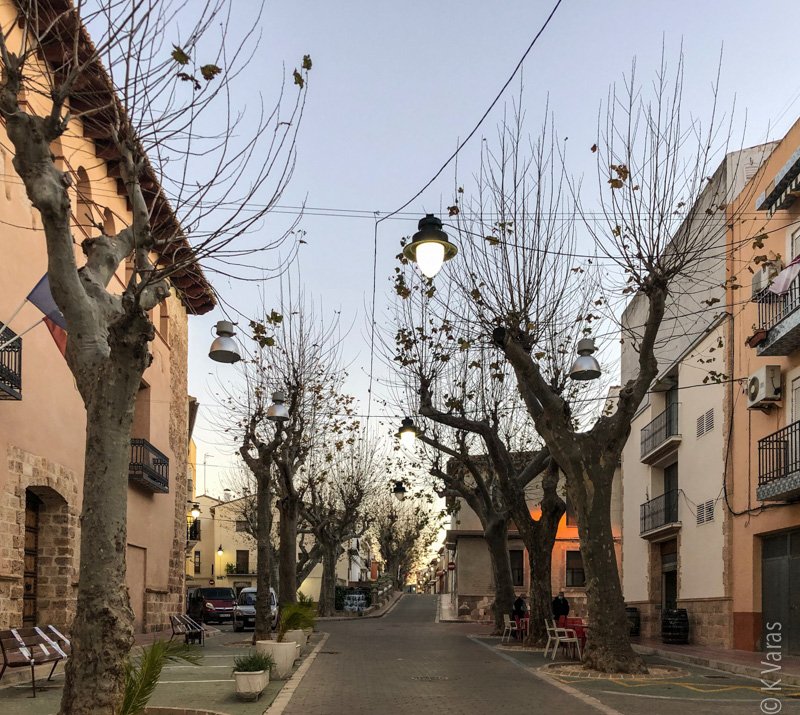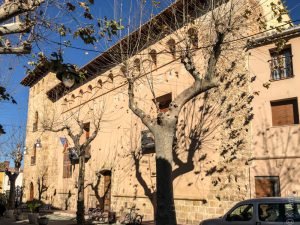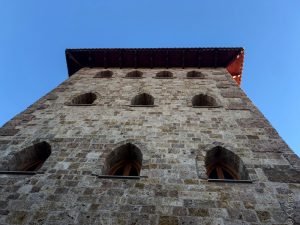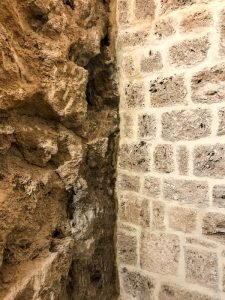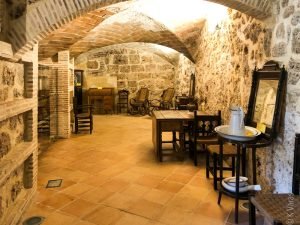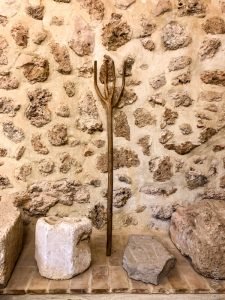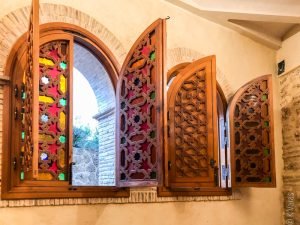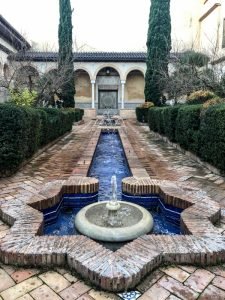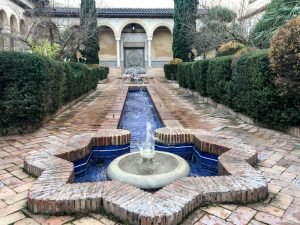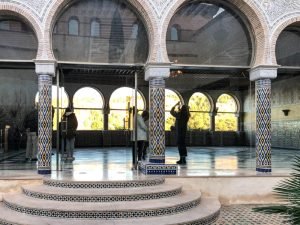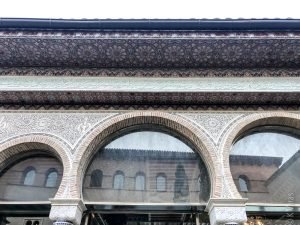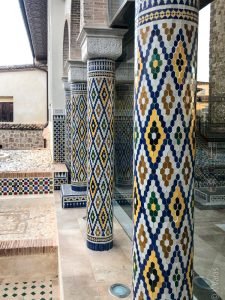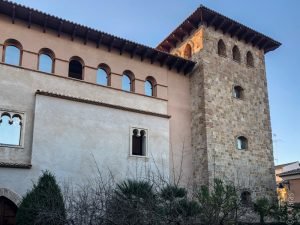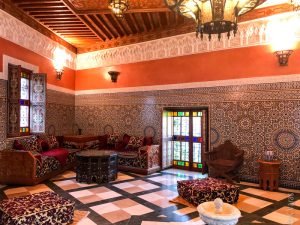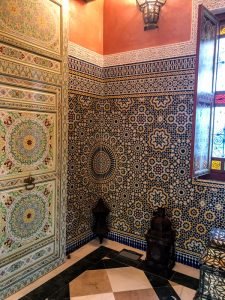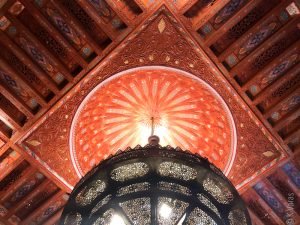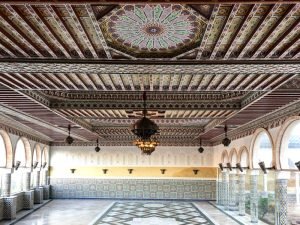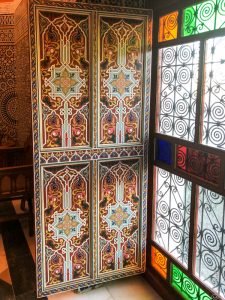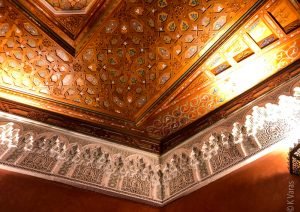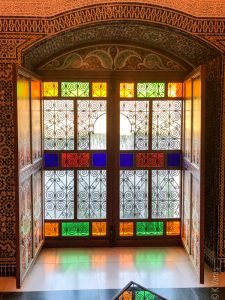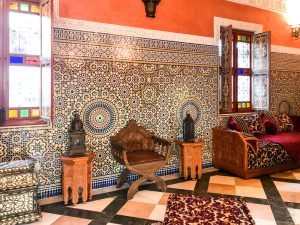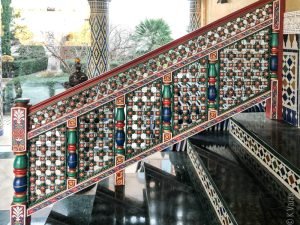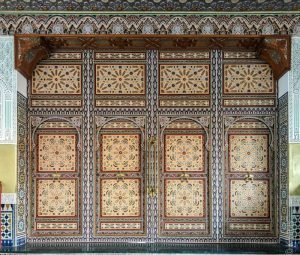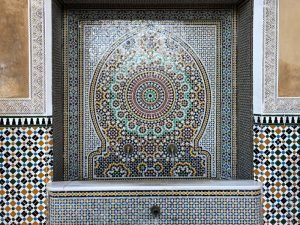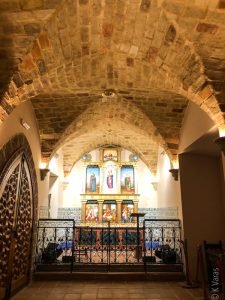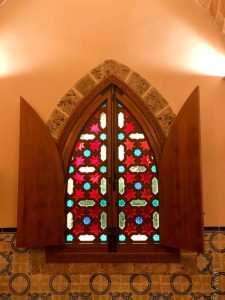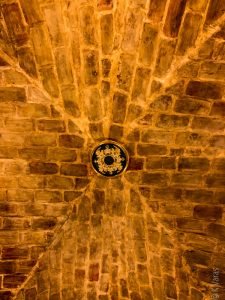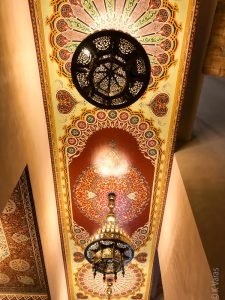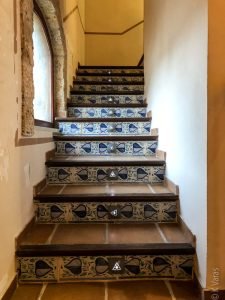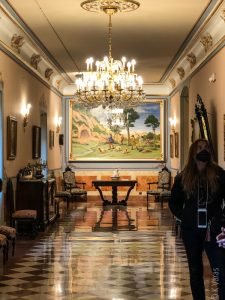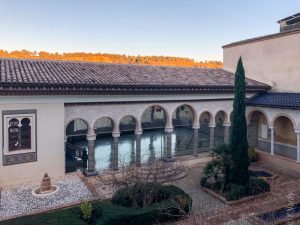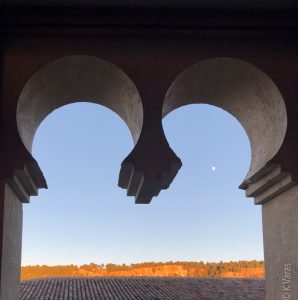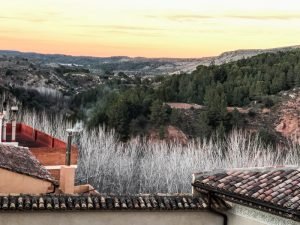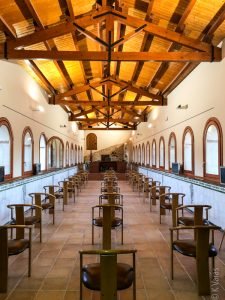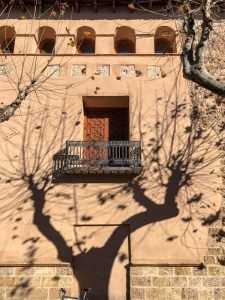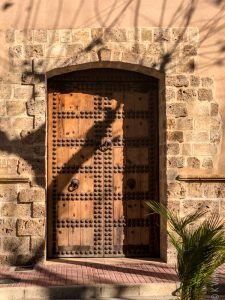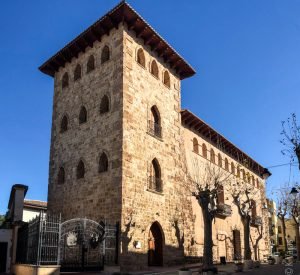
Palacio de los Condes de Cervellón
Palacio de los Condes de Cervellón is considered by many residents of la Comunidad Valenciana to be their little Alhambra. Granted, the real Alhambra in Granada is as massive and as impressive as a XIII century royal palace could ever be and this palacio is not even close to it in size nor historical importance, of course. What the palacio does offer, however, is a peek at what the Alhambra probably looked liked when Yusuf I, the Sultan of Granada, walked around the grounds of the Generalife. It is also home to two museums: Museo Etnológico de la Villa (Village Ethnological Museum) and Museo del Agua (Water Museum) with a third one, an archeological museum, being planned to be added in the near future. For a little town, there is much history in Anna.
The comparisons to the Alhambra have their roots in the fact that the castle the palacio grew out of was built during the times of the Almohad Empire (we’re talking XII century here). The original castle’s purpose was to defend the population that exploited the surrounding fertile lands and built extensive networks of canals bringing in water from the nearby Albufera. Water really was the source of life here. First post-muslim mentions of the castle date to 1244 when Jaime I installed the Order of Santiago in the Castillo de Anna with the intent of repopulating the area with Christians. This is also when the castle started to become a palacio as the local feudal lords each took their turns making it their home, though it was mostly the various Borgia that helped it become what it is today. Fernando Pujades de Borja built the palace on the foundations the Arabic castle at the beginning of the XVII century which, to this day, has the name of Palacio de los Condes de Cervellón.
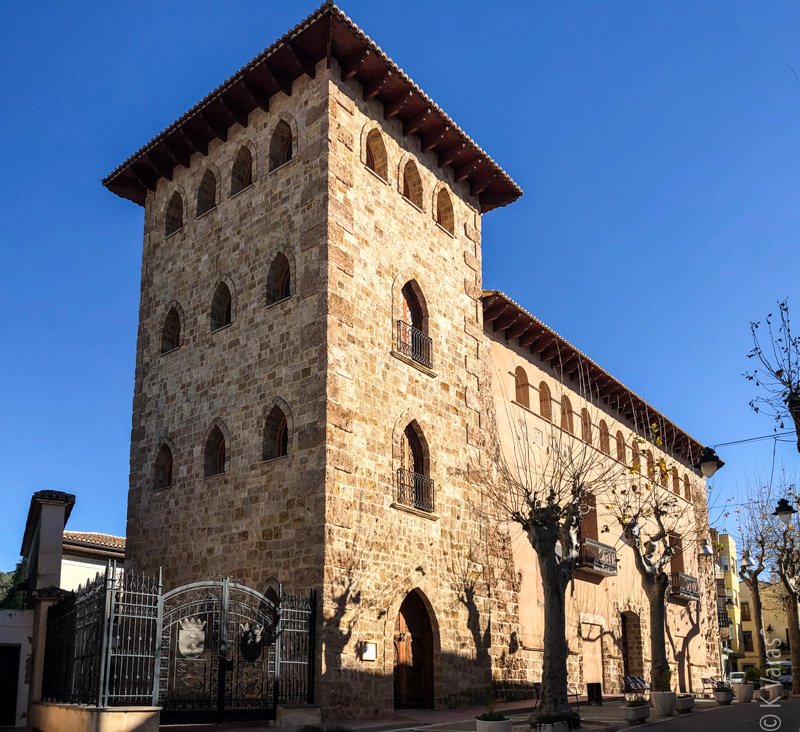
Seen from the street the palacio already looks quite impressive, its heavy stone façade successfully hiding the treats inside. A gate with the count’s coat of arms (a stag over a tree) welcomed us in, though the first part of the tour (and yes, we were on an official tour with a guide and everything) immediately took us into the bowels of the castle, probably the original Moorish bits, where water was stored or bottled or something … I’m not entirely sure. Maybe that was the Water Museum? From there we were led into some rooms that looked more like a museum and I suspect this was the Ethnological one where we saw many artefacts from the times people actually had to work the lands and life wasn’t super easy.
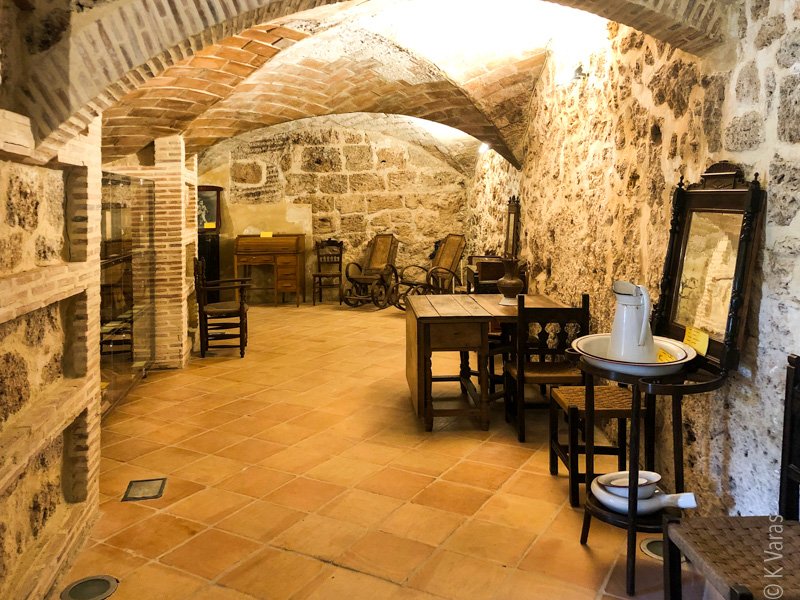
From there we went outside to the gardens and that’s where the comparisons to the Alhambra finally made sense. I think you will agree with me that this looks very much like the Generalife in Granada and not much smaller, either.
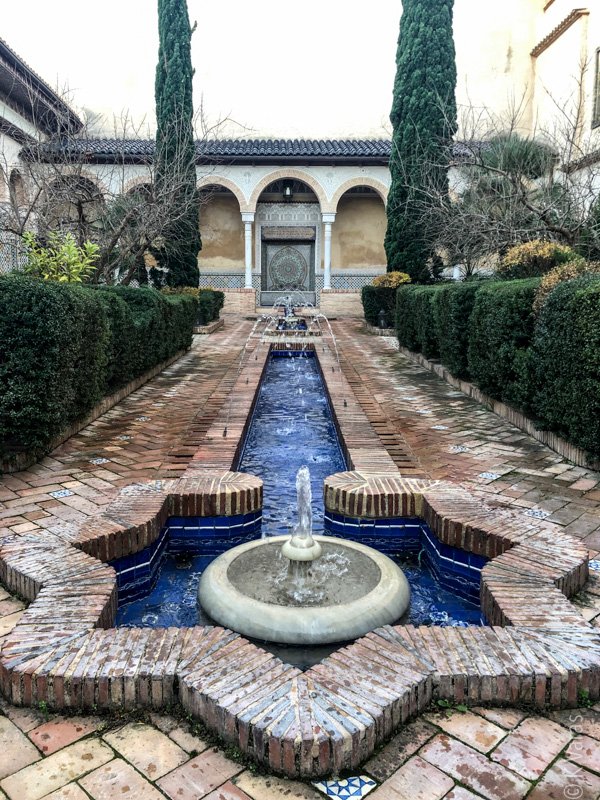
Once we passed through the gardens we were treated to another glorious view: the restored Arabic wing. The first room was a large meeting space with floor-to-ceiling windows looking out over the valley and the hills opposite which at this time were drenched in the brilliant colours of the setting sun. Once the guide opened a set of massive sliding doors we were greeted by a sumptuously decorated room fit for a sultan. I honestly wish I had seen this before visiting the Alhambra where the walls and ceilings only give hints as to what the place looked like at the peak of its fame; now they are primarily white with a bit of blue here and there. If I had this room as reference it would have been much easier to imagine the past. In the palacio’s room the true colours of the Moorish artisans handiwork are on display and they are stunning. I may run out of adjectives that can adequately describe what I saw, to be honest.
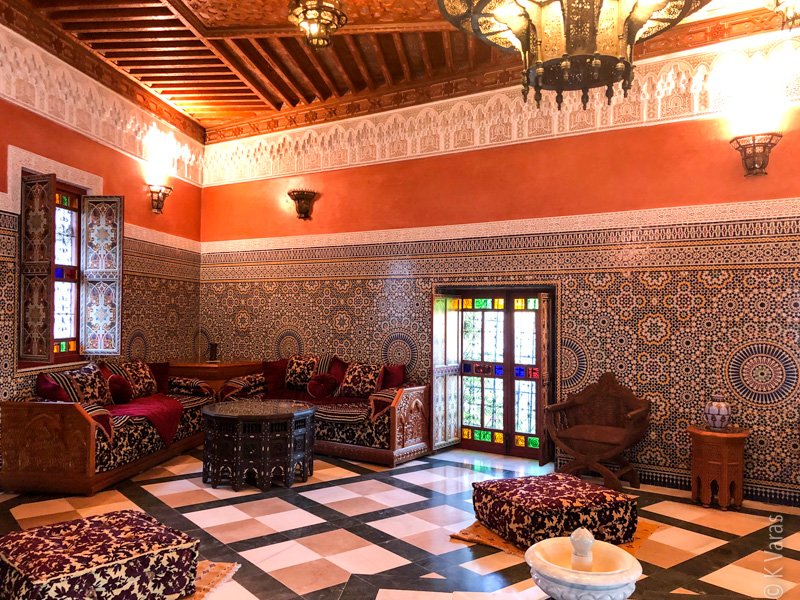
As with all tours, however, I was forced to leave and continue into the main part of the building. On the way out we (Sagrario, Ewa, and I) stopped by the mosaic at the back of the garden and took a few pictures goofing around. While we did not actually touch anything, we did get into a bit of trouble with the guide who clearly thought we were bad, very bad girls. And this after she had to wait for us at the start of the tour as we were the last ones to show up … we were the only ones dining late, I guess.
The largest wing of the complex used to house the main living space of the Counts, and it is still used by the locals for various cultural events and programmes. There were two main floors open to visitors, and it was interesting to see how much of the woodwork and other features still had a Moorish feel to them. We got to go all the way to the top and enjoy some amazing views of the town and the surrounding areas while seated in a classroom-like setting. I suppose this is where the town’s business continues.

All in all, the palacio definitely lived up to its monicker of la pequeña Alhambra valenciana and the town of Anna has found a place on my very unofficial list of Pretty Towns of Spain (yes, I do, in fact, have such a list).

